A Living Tapestry of Rich Biodiversity
Kuno National Park is a treasure trove of diverse wildlife. From the majestic Tiger and Indian Leopard, to the intriguing Indian Wolf, Hyena, and Sloth Bear, the park teems with life. For bird watchers, spotting the Indian Vulture, Red-headed Vulture, and the rare White-rumped Vulture is a treat for the eyes.
The Trees at the Kuno National Park
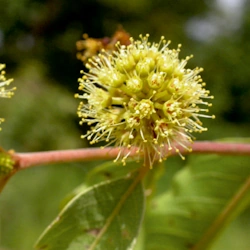
Chakwa
(Anogeissus pendula)
Vernacular Name: Kardhai
Chakwa, commonly known as the Button tree, is a moderately sized tree recognised by its small leaves. During the dry season, these leaves fall, turning a vivid yellowish-red before doing so.
Flowering: June-September
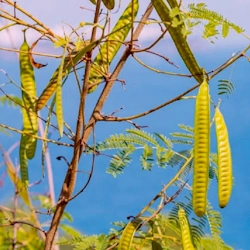
Catechu Tree
(Acacia catechu)
Vernacular Name: Khair
This tree is famed for its heartwood extract which is used in medicines and as a natural dye. It grows well in dry regions and has a dark, rugged bark.
Flowering: April-May
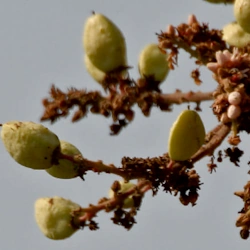
Indian Frankincense
(Boswellia serrata)
Vernacular Name: Salai
A deciduous tree with a unique papery bark. It’s renowned for its resin, used in perfumes and medicines.
Flowering: February-May
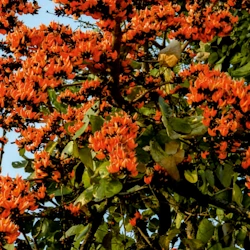
Flame of the Forest
(Butea monosperma)
Vernacular Name: Palash
Recognizable by its bright, flame-orange flowers, this tree is symbolic of the Indian spring season.
Flowering: February-April
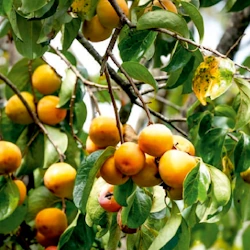
East Indian Ebony
(Diospyros melanoxylon)
Vernacular Name: Tendu
Tendu is known for its dark, quality timber and its leaves are used to roll beedis (Indian cigarettes).
Flowering: March-May
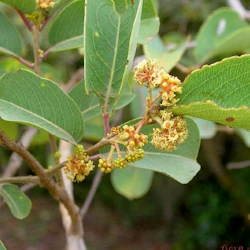
Axlewood
(Anogeissus latifolia)
Vernacular Name: Dhavda
A vital species for local ecosystems, its bark has traditional medicinal uses.
Flowering: July-September
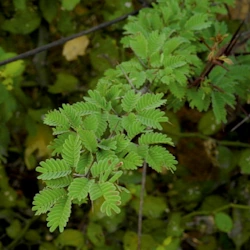
White Bark Acacia
(Acacia leucophloea)
Vernacular Name: Remjha
Identified by its whitish-grey, rough bark, this tree thrives in dry regions.
Flowering: August-November
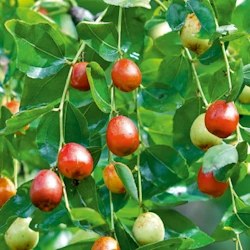
Indian Jujube
(Ziziphus mauritiana)
Vernacular Name: Ber
A small tree or shrub producing tiny fruits, that are often consumed raw or as jams.
Flowering: February-May
The Shrubs to be spotted!
Kuno Forest Retreat offers not only a unique experience wrapped in the raw and untamed beauty of nature but also provides access to witness several nearby wonders. Here are some of the notable attractions worth exploring during your stay at Kuno Forest Retreat.
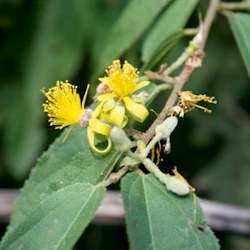
Donkey Berry
(Grewia flavescens)
This shrub bears small, yellowish flowers and is recognized for its rough-textured leaves.
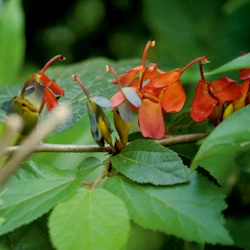
Indian Screw Tree
(Helicteres isora)
Notable for its twisted seed pods resembling a coiled screw, its bark and fruit have medicinal attributes.
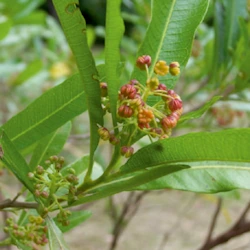
Hopbush
(Dodonaea viscosa)
A hardy shrub with thin, elongated leaves and often used for hedging.
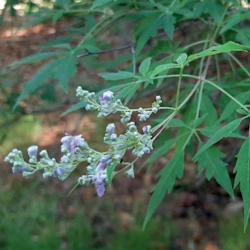
Chinese Chaste Tree
(Vitex negundo)
Recognized for its medicinal uses, this shrub has palmately compound leaves and lavender-coloured flowers.
Faunal Species to be Spotted
Kuno Forest Retreat offers not only a unique experience wrapped in the raw and untamed beauty of nature but also provides access to witness several nearby wonders. Here are some of the notable attractions worth exploring during your stay at Kuno Forest Retreat.
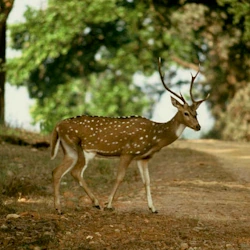
Spotted Deer or Chital
(Axis axis)
Characterised by a golden coat dotted with white spots, the Chital primarily feeds on grasses and is essential to the forest ecology.
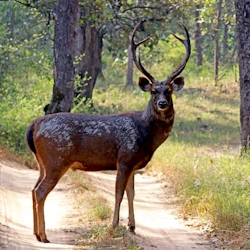
Sambar
(Cervus unicolor)
A large, robust deer, the Sambar feeds on a variety of vegetation and plays a vital role as prey for many predators.
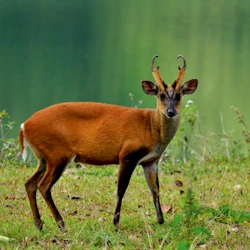
Barking Deer or Indian Muntjac
(Muntiacus muntjak)
One of the smallest deer species, Barking Deer emits bark-like calls as alarms, feeding on fruits, shoots, and grasses.
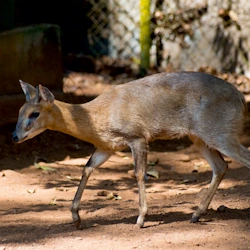
Chousingha or Four-horned Antelope (Tetracerus quadricornis)
The only antelope in the world with four horns, it primarily feeds on shrubs and grasses.
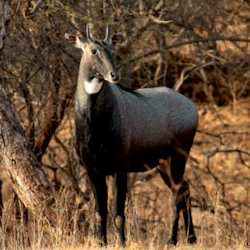
Nilgai or Blue Bull
(Boselaphus tragocamelus)
The largest Asian antelope, the Nilgai has a blue-grey coat and predominantly feeds on grasses and leaves.
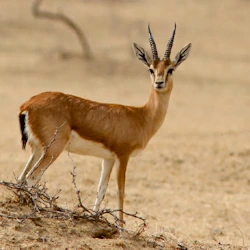
Indian Gazelle or Chinkara
(Gazella gazella)
Chinkara is an antelope that feeds on grasses, leaves, and fruits, adapting to arid conditions by deriving water from its diet.
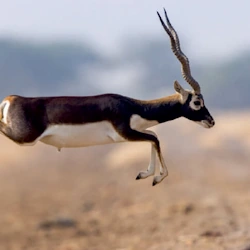
Blackbuck
(Antilope cervicapra)
With spiral horns and a dual-coloured coat, Blackbucks graze primarily on grasses and are known for their swift speeds.
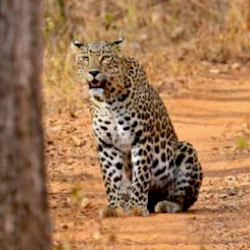
Leopard
(Panthera pardus)
A versatile carnivore, leopards are adaptive predators with a varied diet, from small insects to large herbivores.
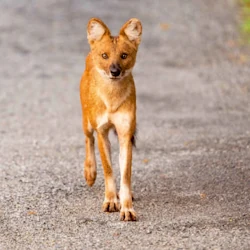
Wild Dog or Dhole
(Cuonal pinus)
Operating in packs, Dholes are proficient hunters that primarily target medium-sized ungulates.
Embrace your Call of the Wild At Kuno Forest Retreat — Book Now
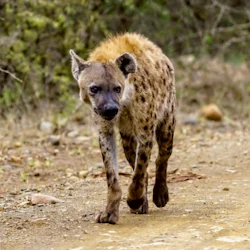
Striped Hyena
(Hyaena hyaena)
Nocturnal in nature, this scavenger consumes carrion, small mammals, and fruits, aiding in organic decomposition in the ecosystem.
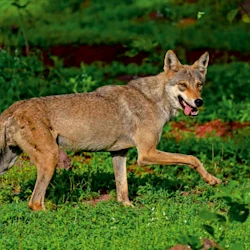
Indian Wolf
(Canis lupus)
Primarily a carnivore, the Indian Wolf has a varied diet that includes rodents, ungulates, and even berries.
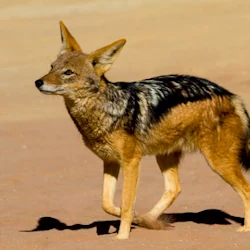
Jackal
(Canis aureus)
Omnivorous in nature, jackals feed on small mammals, birds, fruits, and carrion, maintaining the balance in the ecosystem.
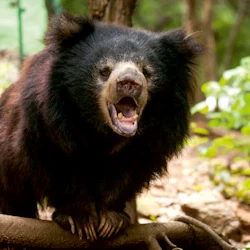
Sloth Bear
(Melursus ursinus)
Distinctive for consuming termites and ants, Sloth bears also feed on honey, fruits, and flowers.
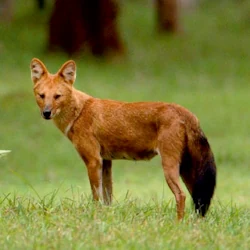
Indian Fox
(Vulpes bengalensis)
An opportunistic feeder, the Indian fox’s diet ranges from rodents and insects to fruits and plants.
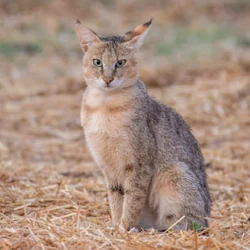
Jungle Cat
(Felis chaus)
This solitary feline feeds on small mammals, birds, and reptiles, often found near water bodies.
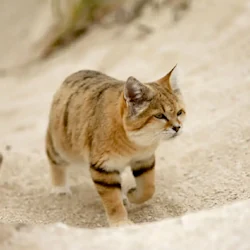
Desert Cat
(Felis silvestris)
Adapted to arid regions, they prey on small mammals, birds, and reptiles, contributing to the balance of the ecosystem.
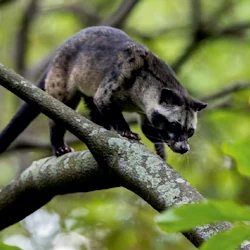
Common Palm Civet
(Paradoxurus hermaphroditus)
Omnivorous, the palm civet’s diet includes fruits, berries, small mammals, and insects, aiding in seed dispersal.
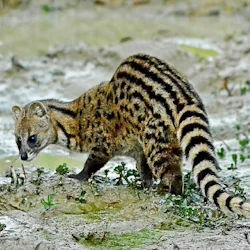
Small Indian Civet
(Viverricula indica)
The Small Indian Civet is a nocturnal carnivore. Its diet includes insects, birds, and small mammals.
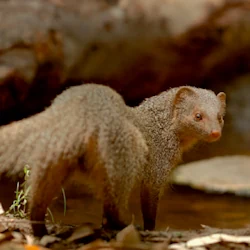
Grey Mongoose
(Herpestes edwardsii)
A carnivore, the Grey Mongoose is known for its agility and is a natural predator of rodents and snakes.
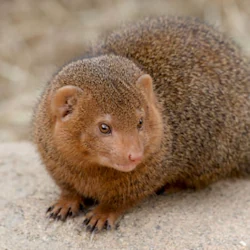
Small Indian Mongoose
(Herpestes javanicus)
Smaller and lighter, their diet is similar to their larger counterparts, playing a role in controlling pests.
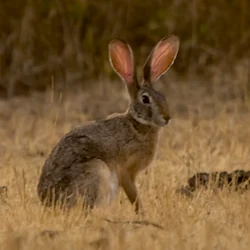
Indian Hare
(Lepus nigricollis)
Herbivorous, Indian hares feed on grasses, leaves, and shoots, often being active during twilight hours.
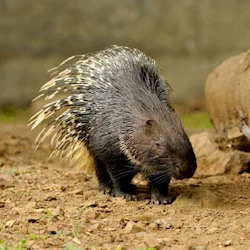
Indian Porcupine
(Hystrix indica)
Primarily herbivorous, they consume roots, tubers, bark, and fallen fruits.
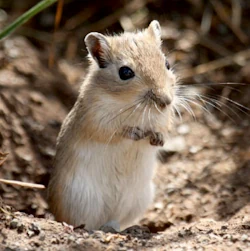
Indian Gerbil
(Tatera indica)
These small rodents are omnivores, feeding on seeds, plants, insects, and other small creatures.
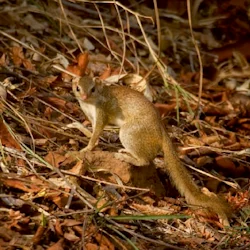
Indian Tree Shrew
(Tupaia belangeri)
Often mistaken for rodents, they feed on insects, fruits, and seeds, found primarily in the forest’s tree canopies.
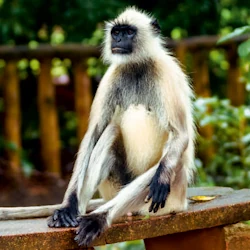
Hanuman Langur/Common Langur (Presbytis entellus)
Primarily herbivorous, they feed on leaves, flowers, fruits, and seeds, playing a role in seed dispersal.

Rhesus Monkey
(Macaca mulatta)
Omnivorous, their diet includes fruits, seeds, roots, and small invertebrates, being highly adaptable to various habitats.
Source: IUCN Red List
Avian Species to be Spotted...
Kuno Forest Retreat offers not only a unique experience wrapped in the raw and untamed beauty of nature but also provides access to witness several nearby wonders. Here are some of the notable attractions worth exploring during your stay at Kuno Forest Retreat.
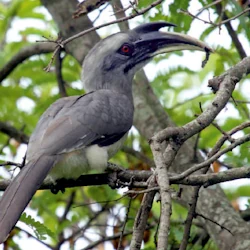
Indian Grey Hornbill
(Ocyceros birostris)
This medium-sized bird has a unique grey back and wings with a white belly. Their loud laughing call is distinctive. They mainly feed on fruits.
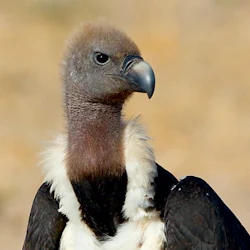
White-rumped vulture
(Gyps bengalensis)
A scavenger bird recognised for its white neck ruff and rump. They play a critical role in maintaining the ecological balance by consuming carrion.
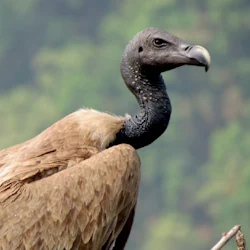
Long-billed Vulture
(Gyps indicus)
This vulture is distinguished by its long neck and bill. Scavengers by nature, they help keep the environment clean.
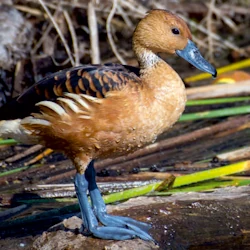
Large Whistling Teal
(Dendrocygna bicolor)
A nocturnal waterfowl known for its distinct two-tone whistle. They predominantly feed on aquatic plants.
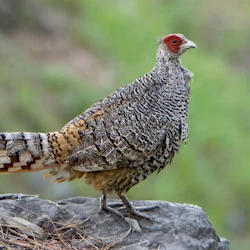
Cheer Pheasant
(Catreus wallichii)
Mostly white with black wings and tail, this hornbill species is smaller than the Great Indian Hornbill and feeds mainly on fruits.
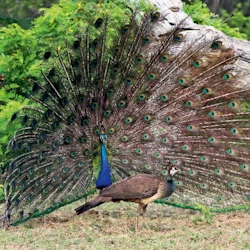
Peafowl
(Pavo cristatus)
It is known for its magnificent tail feathers. They mostly feed on seeds and insects.
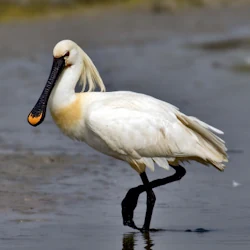
Eurasian Spoonbill
(Platalea leucorodia)
This wading bird has a unique spatula-shaped bill, which it uses to filter mud from food.
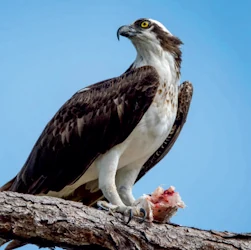
Osprey or Fish-eating Eagle
(Pandion haliaetus)
A raptor that is predominantly piscivorous (fish-eating), it has specialised feet to grip slippery fish.
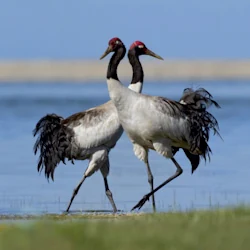
Black-necked Crane
(Grus nigriocollis)
A tall elegant bird recognised by its black head, neck, and tail. They play a significant role in various cultural mythologies.
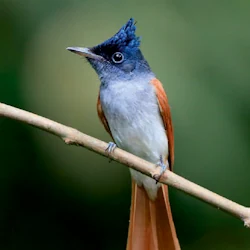
Indian Paradise Flycatcher
(Terpsiphone paradisi)
A striking bird with a long, ribbon-like tail and an insectivorous diet. Males are predominantly white with a glossy black head, while females are rufous with a greyish throat.
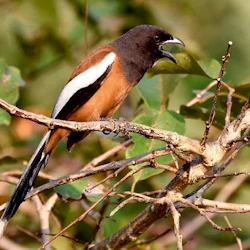
Rufous Treepie
(Dendrocitta vagabunda)
Known for its distinctive rufous body and a long, graduated tail. These omnivorous birds are often seen in open forests and gardens.
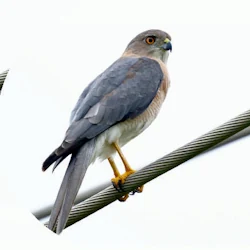
Shikra
(Accipiter badius)
A small bird of prey with a distinctive barred tail and underparts. It primarily feeds on small mammals and birds.
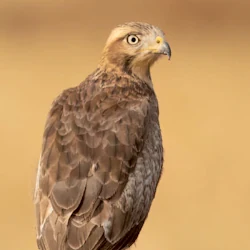
White-eyed Buzzard
(Butastur teesa)
A medium-sized raptor characterised by its white iris. It predominantly feeds on insects and small reptiles.
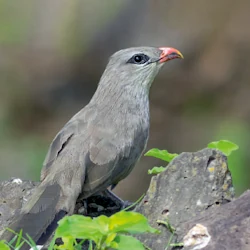
Sirkeer Malkoha
(Phaenicophaeus leschenaultii)
A distinctive bird with a long, graduated tail and curved yellow bill. It primarily feeds on insects and small reptiles.
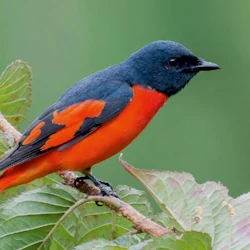
Scarlet Minivet
(Pericrocotus speciosus)
Recognisable for its bright scarlet and black plumage in males, and yellow and grey in females. This species primarily feeds on insects.
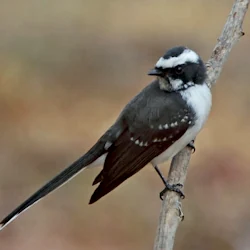
White-browed Fantail
(Rhipidura aureola)
A small, active bird with a distinctive fan-shaped tail and a prominent white brow. It primarily feeds on insects.
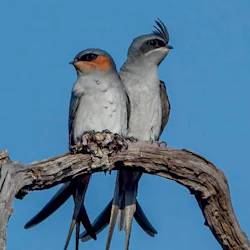
Crested Treeswift
(Hemiprocne coronata)
A sleek bird known for its crest and long, forked tail. It is mostly aerial, feeding on insects mid-flight.
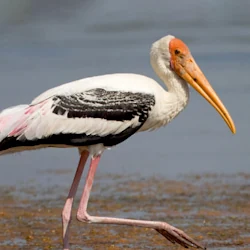
Painted Stork
(Mycteria leucocephala)
A large wading bird with distinctive pink tertial feathers and a yellow beak. It primarily feeds on fish in shallow waters.
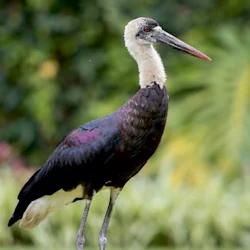
Woolly-necked Stork
(Ciconia episcopus)
A large bird, known for its woolly white neck and black body. It primarily feeds on fish, frogs, and large insects.
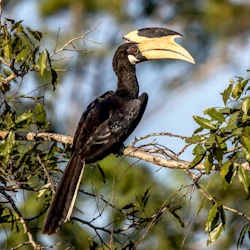
Indian Pied Hornbill
(Anthracoceros malabaricus)
Found in grassy clearings, it is a ground-dwelling bird with a long tail and intricate patterns.
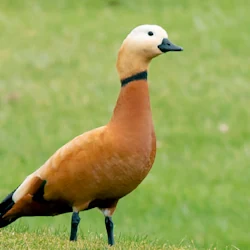
Ruddy Shelduck
(Tadorna ferruginea)
A large wading bird with distinctive pink tertial feathers and a yellow beak. It primarily feeds on fish in shallow waters.
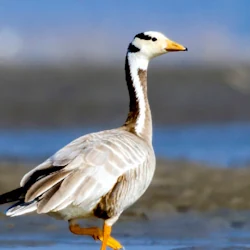
Bar-headed Goose
(Anser indicus)
Known for the two black bars on its head, this migratory bird is one of the world’s highest-flying birds. It grazes on barley, rice, and wheat.
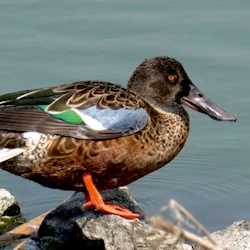
Northern Shoveler
(Spatula clypeata)
Recognizable by its large spatulate bill, used to filter food from the water. This duck feeds on small invertebrates and plant matter.
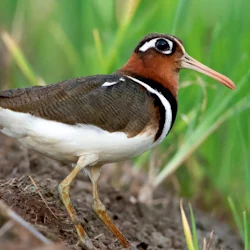
Greater Painted-snipe
(Rostratula benghalensis)
Notable for its distinctive eye stripe and variegated brown plumage. It prefers marshy areas and feeds on invertebrates and seeds.
Source: BirdLife International
Raptor Species to be Spotted...
Kuno Forest Retreat offers not only a unique experience wrapped in the raw and untamed beauty of nature but also provides access to witness several nearby wonders. Here are some of the notable attractions worth exploring during your stay at Kuno Forest Retreat.
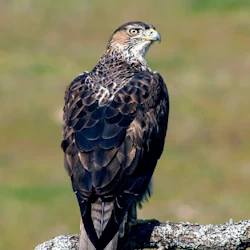
Bonelli’s Eagle
(Aquila fasciata)
A large and powerful eagle, recognizable by its dark brown upperparts and white underparts with dark streaks. This raptor is a skilled hunter, feeding mainly on small mammals and birds.
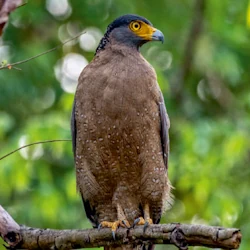
Crested Serpent Eagle
(Spilornis cheela)
This medium-sized bird of prey is known for its prominent crest and brown plumage with white spots and streaks. It specialises in hunting reptiles, particularly snakes.
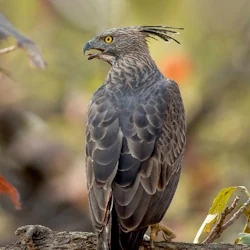
Crested Hawk-Eagle
(Nisaetus cirrhatus)
Distinguished by its long crest and striking pattern of black, white, and chestnut. This adept predator feeds on a variety of prey, including small mammals, birds, and reptiles.
Source: BirdLife International
Reptile Species to be Spotted...
Kuno Forest Retreat offers not only a unique experience wrapped in the raw and untamed beauty of nature but also provides access to witness several nearby wonders. Here are some of the notable attractions worth exploring during your stay at Kuno Forest Retreat.
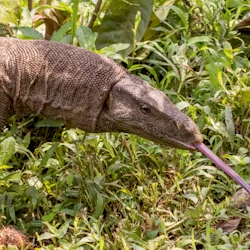
Indian Monitor Lizard
(Varanus bengalensis)
A robust reptile with a long tail and powerful limbs. It has a varied diet, feeding on insects, small mammals, and eggs. This lizard is known for its keen sense of smell.
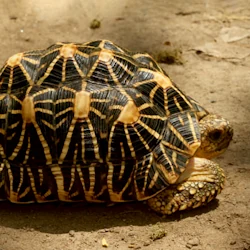
Star Tortoise
(Geochelone elegans)
Easily recognised by its star-patterned shell, this land tortoise is primarily herbivorous, feeding on grasses, fruits, and leaves. They are known for their slow movement and long lifespan.
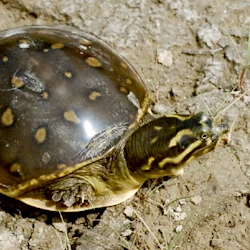
Flapshell Turtle
(Lissemys punctata)
A distinctive freshwater turtle with a broad, smooth carapace and flexible ‘flaps’ on the sides. It feeds on aquatic vegetation, small fish, and crustaceans.
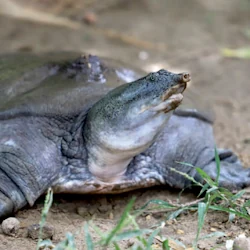
Softshell Turtle
(Nilssonia gangetica)
Known for its leathery shell and snorkel-like nose, this aquatic turtle is mostly found in rivers and lakes. It feeds on fish, frogs, and aquatic plants.
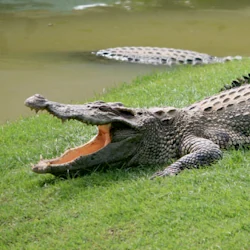
Crocodile (Mugger)
(Crocodylus palustris)
A large, broad-snouted crocodile found in freshwater habitats. It is an apex predator, feeding on fish, reptiles, and small mammals.
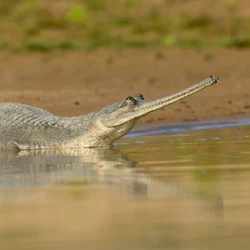
Gharial
(Gavialis gangeticus)
Recognisable by its long, narrow snout and a mass of interlocking teeth. Primarily a fish-eater, this aquatic reptile is critically endangered.
Source: IUCN Red List, Reptile Database
Spider Species to be Spotted...
Kuno Forest Retreat offers not only a unique experience wrapped in the raw and untamed beauty of nature but also provides access to witness several nearby wonders. Here are some of the notable attractions worth exploring during your stay at Kuno Forest Retreat.
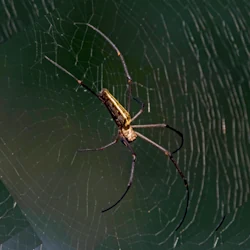
Golden Silk Orb-web Spider
(Nephila pilipes)
Notable for spinning large, golden-hued webs, this spider has a distinctive yellow and black pattern. It feeds primarily on flying insects, showcasing remarkable web engineering skills.
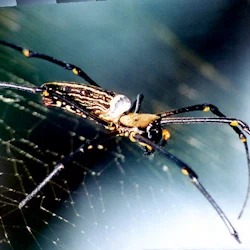
Giant Wood Spider
(Nephila maculata)
A large spider known for its striking size and the impressive orb webs it weaves. The female is significantly larger than the male and feeds on small flying insects.
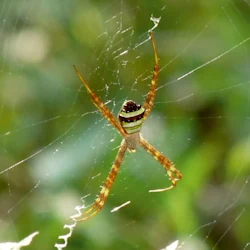
Signature Spider
(Argiope anasuja)
Recognizable by the bold, zigzag patterns (stabilimenta) in its web, which is thought to serve multiple purposes. This spider preys on small insects caught in its intricate web.
